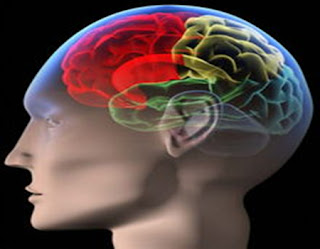The best method for Cerebral Palsy is to help children get self-care ability or do some simple works in the society. Cerebral Palsy treatment by Chinese medicine is a good choice without side effects. http://www.cpchildrentreatment.com/
Wednesday, December 2, 2015
Why do Cerebral Palsy patients have Seizures?
Cerebral Palsy is a complex disorder involving the muscles in a person’s body which, in most cases, affects movement and posture. The disorder is an abnormality in motor function not mental function. Cerebral Palsy is generally diagnosed during the first or second year after birth. For every thousand children born, approximately one to three will have some form of the disorder. However, it is much higher in infants born with very low weight and in premature infants.
Cerebral Palsy and Epilepsy are a common association. I mean Cerebral Palsy means that you have some kind of motor problem. Cerebral Palsy can be as mild as someone limping to someone who can’t walk at all. So a lot of people that have Cerebral Palsy, what people usually think of as Cerebral Palsy, are people who are in a wheelchair. It’s called Spastic Quadriplegia, they can’t use their arms or their legs. Now not all the time, but oftentimes with that there is some sort of abnormality on an an MRI. And there’s a huge increased risk of Epilepsy in people who have Cerebral Palsy. So again not every person who has Cerebral Palsy has Epilepsy, but a lot do. The problem sometimes is though, what you think might be a seizure in a patient with Cerebral Palsy, cause they’re so stiff and contracted. Not everybody, but some of them, they can look like seizures, the twitching and jerking, and they actually not be seizures. So it’s important to be able to differentiate, because sometimes what happens is we end up treating what is reported as seizures and they’re not actually seizures. There just the stiffness and the tightening of their muscles. And you treat that also, but in a different way. So to be a good practitioner you got to be able to differentiate what’s being caused, the movements being caused by the Cerebral Palsy and which one are seizures. It’s important if you’re not sure to do a Video EEG, so you can see the episodes of jerking and twitching, and see what’s going on in the brainwaves. And then that will help to determine if medication is indicated or not and then help to make the patient feel better.
erebral Palsy is typically caused by some type of injury to the brain or head before, during or shortly after birth. Since the disorder is caused in this manner, the damaged or malformed brain is more prone to seizures. Approximately 50 percent of children with Cerebral Palsy will have seizures. However, if a child’s symptoms are mild, it may be difficult to make a diagnosis until the child is a few years older. Moreover, cognitive disabilities are frequently associated with seizures and children who happen to have quadriplegia or hemiplegia are most likely to have seizures.
Seizures are common in children with cerebral palsy because the brain injuries they’ve sustained become a focus for abnormal electrical impulses in their brain. Depending on where the abnormal activity occurs in the brain, seizures may affect children in a variety of ways. A child may have staring episodes or experience minor involuntary movements such as eye blinking, lip smacking or-arm jerking. In the case of major convulsions, the child may become unconsciousness or experience a stiffening of the body followed by violent, spasmodic jerking of the whole body. Cerebral Palsy patients typically have two forms of seizures, Grand-Mal and Partial seizures.
Labels:
Cerebral Palsy,
Epilepsy
Subscribe to:
Post Comments (Atom)


No comments:
Post a Comment